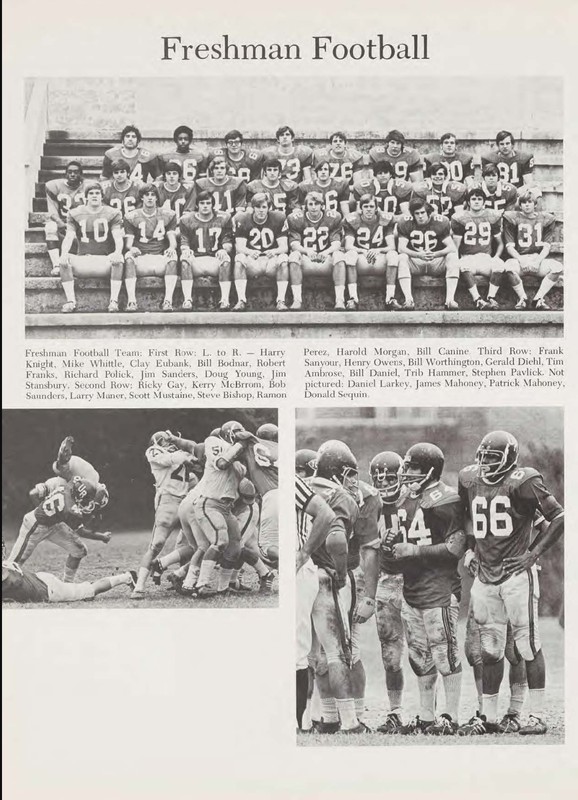Robins Stadium: A Site of Memory
Introduction
Text-to-speech Audio
Images
This photo was taken from the 1972 yearbook and features two Black football players, Ricky Gay and Henry Owens.

This photo taken from the 1971 yearbook features Norman Williams, the first Black track athlete at the University.

This photo is from the 1971 school newspaper highlighting an article called "The Facts About Dixie," written by Tom Gullette.

Backstory and Context
Text-to-speech Audio
Like the Robins School of Business, the Robins Stadium is named after E. Claiborne Robins. The stadium, however, provides an avenue to unpack the experiences of Black student athletes at the University of Richmond. Four years after the Civil Rights Act of 1964, which ended segregation in public places and banned employment discrimination, the University of Richmond residentially integrated with the arrival of Barry Greene. Although the present stadium is relatively new, opening in 2010, students previously played sports like football in downtown Richmond.
The University of Richmond prides itself on its athletic achievements, yet it is important to recognize the Black student athletes who contributed greatly to the development of these programs. Their experiences during their time at the University have largely been subordinated in the historical record to their achievements on the court or field. Black student athletes during the early 1970s often chose the University of Richmond because of its academic prestige, however extensive documentation reveals their experiences with racism and resistance to their attempts to join campus life.
Carlton Mack was the first Black student to receive an athletic scholarship from the University in 1970. By 1973, he had been joined by Weldon Edwards on the football team, Norman Williams and Jerome Napier on the track team, and finally Aron Stewart on the basketball team. In a 1973 Collegian article titled “Blacks Offer Much to Spider Athletics,” Williams said, “...students have gotten a lot friendlier toward him than they were when he was a freshman but there is still definitely no social life for Blacks here.”1 The majority of the first few Black students on campus were athletes. It was difficult for them to have a social life largely because how few Black students were on campus.2
While Black student athletes were praised for their athletic achievements, they had to fight to be valued as students and as individuals. In 1971, the Richmond College Student Government Association (RCSGA) proposed a resolution for the school band to stop playing “Dixie” at university functions.3 The song "Dixie," by Daniel Decatur Emmett, emerged from Blackface minstrel shows and in 1861 became the unofficial battle song of the Confederacy. A symbol of segregation and slavery, the song remembers the Old South nostalgically, alluding to times of slavery with lines like “I wish I was in the land of cotton.” The song was frequently played at sports games, with appearances of the unofficial school mascot, the Confederate Spider, who wore a Confederate army uniform.
Stanley Davis, one of the University of Richmond's Black students at the time, called the song "a symbol of repression...Dixie is a part of my heritage I'd like to forget."4 Students opposing the "Dixie" resolution claimed the song had “traditional historic value." University administrators opted not to become involved in the “Dixie” controversy, which showed a divided student body.
As Black student athletes competed, they were reminded that although they were allowed to attend the University of Richmond, some members of the student body and administration felt that they did not belong.
Sources
2 “Editorial "Product of Neglect: The Absence Of A Black Social Life",” Race & Racism at the University of Richmond, accessed December 10, 2018, http://memory.richmond.edu/items/show/1679
3 Williams, Gaston, “Letter to the Editor "The Dixie Resolution: A Stir Develops Amid the Pines",” Race & Racism at the University of Richmond, accessed December 10, 2018, http://memory.richmond.edu/items/show/2469
4 “Dixie Loses Again,” Race & Racism at the University of Richmond, accessed December 10, 2018, http://memory.richmond.edu/items/show/321
